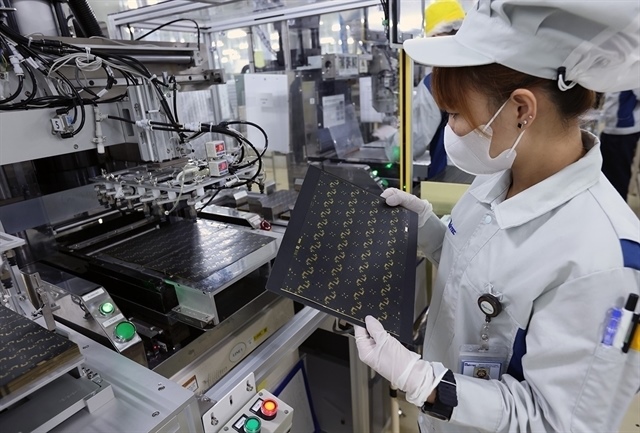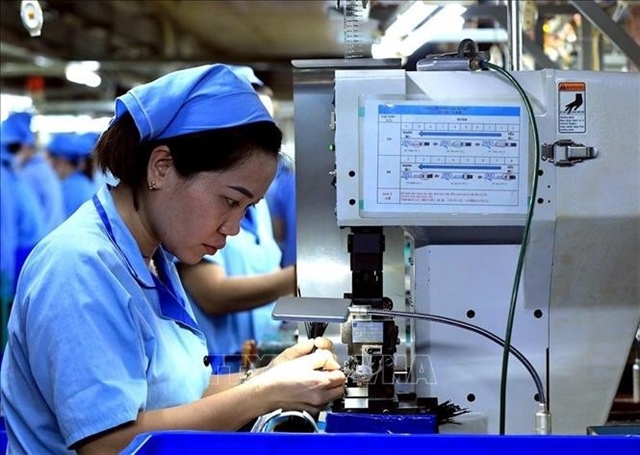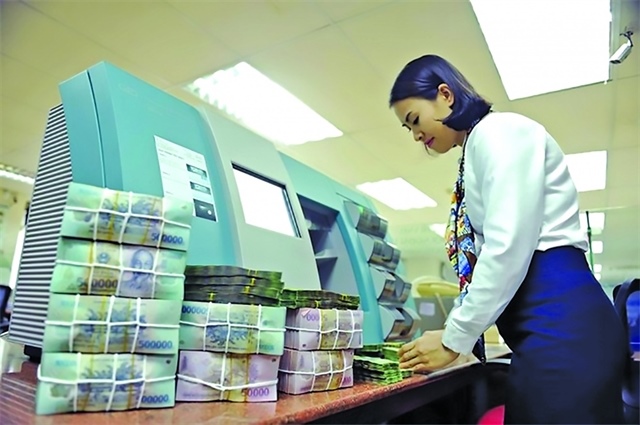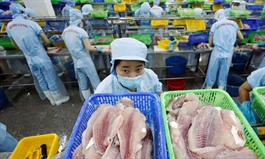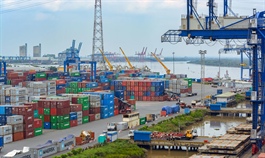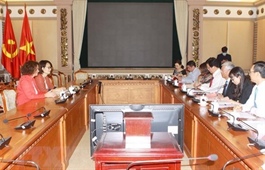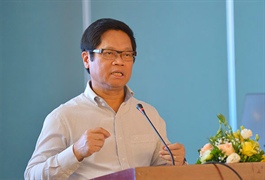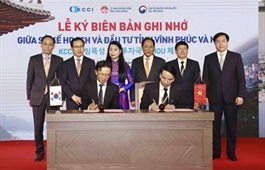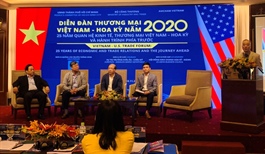Hanoi exceeds targets of five-year restructuring program
Hanoi exceeds targets of five-year restructuring program
Five years after Hanoi began implementing the city party committee’s program on economic restructuring for rapid and sustainable economic development, the capital’s major economic indicators have grown strongly and its investment environment has improved significantly.
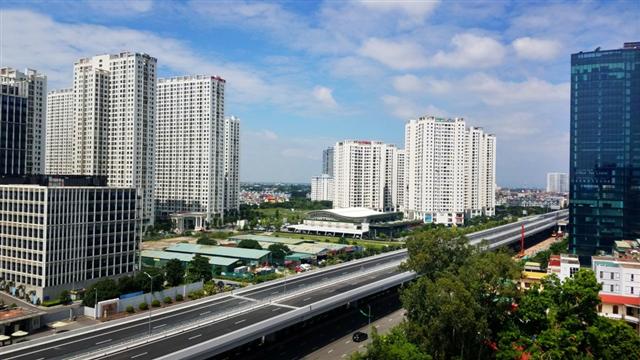
Hanoi is changing into a more modern city
|
Exceeding targets
Hanoi has achieved 12 of its 2016-2020 socioeconomic targets. The city set a target of attracting 18 million visitors (including 4.1-4.7 million foreign visitors) in 2020 but has already welcomed 26.3 million (including six million foreign visitors) and 28.94 million visitors (including 7.03 million foreign visitors) in 2018 and 2019, respectively. The city has exceeded targets related to the rate of agricultural workers and social labor productivity growth.
Over the past five years, the capital's economy has been growing well, contributing to the national economic growth. The city’s gross regional domestic product (GRDP) grew 7.36 percent per year on average from 2016-2019, higher than its 6.93 percent achievement in 2011-2015 and the country’s average (6.72 percent) in the same period. Per capita GRDP reached VND119.65 million (US$5,160) in 2016-2019.
During the 2016-2020 period, Hanoi’s GRDP is estimated to have expanded by an average of 7.39 percent, in line with the 7.3-7.8 percent target set by the city’s leaders.
This led to an estimated per capita income of VND127.6 million (US$5,420) in 2020, a 1.5-fold increase compared to 2015 and 1.8 times the country’s average. In particular, the non-state economic sector made the largest contribution to the city’s GRDP, with the rate increasing from 37.5 percent in 2015 to 39.2 percent in 2019.
The economic restructuring process has been shifted towards greater focus on services, industry and construction, with the improved legal frameworks for a socialist-oriented market economy focusing on providing greater support for the private sector.
Hanoi attracted over US$25.5 billion in foreign direct investment (FDI) in the 2016-2020 period, a 4.08-fold increase against the 2011-2015, topping the country as a favorite investment destination in 2018-2019.
By the end of 2020, Hanoi is on track to have 306,240 enterprises, almost quadruple the 2011-2015 figure, which form a major driving force to ensure the city’s goal of global integration for higher economic growth and social security.
Amid the severe impacts of the Covid-19 pandemic, Hanoi’s export growth averaged nine percent in 2016-2020, significantly higher than the 5.5 percent rate in the 2011-2015 period, thanks to the efforts of local enterprises in expanding their reach to international markets.
Hanoi’s endeavors towards rapid and sustainable economic growth have also been demonstrated by improvements in the Provincial Competitiveness Index (PCI), standing at the 9th out of 63 provinces and cities in 2020, up 15 places compared to 2015.
Infrastructure improvement
Hanoi is consistently developing its infrastructure, expanding urban spaces and forming modern, convenient residential areas, including complexes such as The Manor, My Dinh, Mo Lao, An Khanh, Gamuda, Ciputra, Vinhomes Riverside, Royal City, and Times City, among others. Architect Dr. Jan Gehl, author of “Life Between Buildings” (1971) and “Cities for People” (2010), said Hanoi's appearance has flashed both in width and height.
More than 1,000 high-rise apartment buildings have been completed and occupied. Electrical cable and communication networks have been buried underground, while more trees were planted and sidewalks paved.
However, Hanoi needs to solve a number of problems related to the pace of urban planning and key traffic infrastructure projects, land and construction-related violations, and the shrinking water space area as a consequence of lake encroachment.
The Hanoi leadership has asked organizations and sectors to continue innovating and improving the quality of planning and the efficiency of urban construction and management, build a 2021-2030 development plan for Hanoi, and review and revise the overall city construction plan in compliance with the country’s socioeconomic development orientation.
The city will build new green, smart urban areas with consistent infrastructure and public services, further promote housing development projects, especially housing for low-income earners, and replace degraded apartment buildings with new ones.
| Hanoi is making strenuous efforts to recover economic growth and achieve a growth rate 1.3 times the national average. |


